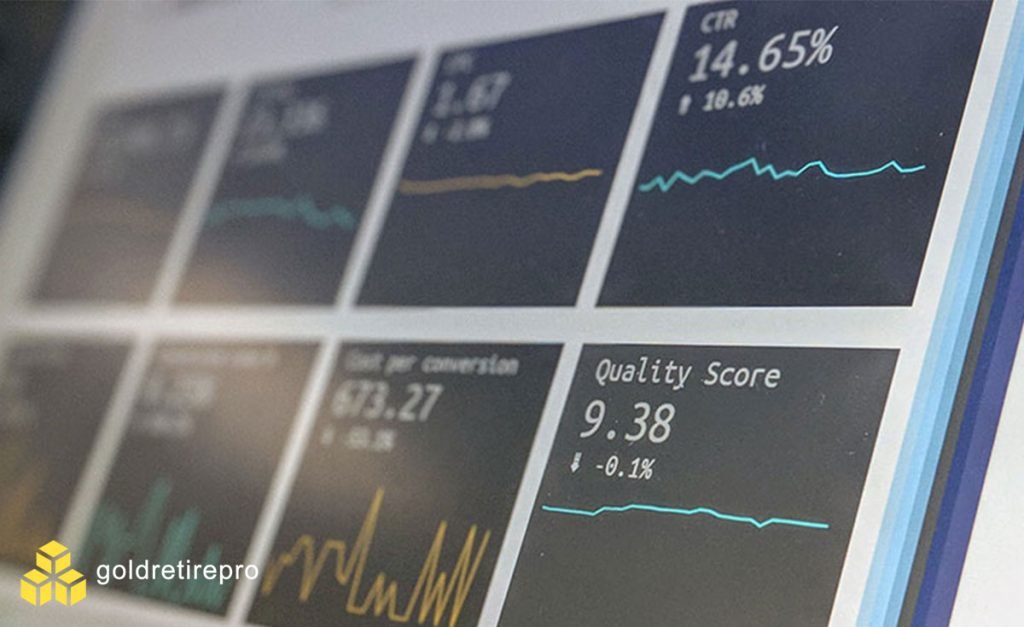Opening a Gold IRA gives you more control over your retirement funds and allows you to diversify with physical precious metals. However, like any investment account, proper management is essential for growth. Follow these golden rules to safeguard your assets and meet all IRS requirements.
Choose the Right Custodian
Your IRA custodian plays a crucial role in storing and handling your retirement holdings. Choose an established custodian who specializes in precious metals and meets IRS standards for a Gold IRA. Look for:
- Experience with IRAs and precious metals: Ensure the custodian has a strong track record.
- Highly-rated customer service: A custodian with excellent reviews and support will make managing your account easier.
- State-of-the-art vault storage facilities: Confirm that your metals will be stored in secure, IRS-approved depositories.
- Low account fees and transparent pricing: Compare fees among custodians to avoid unnecessary costs.
- Educational resources on investing in gold and silver: A custodian that offers educational tools can help you make informed decisions.
A reputable custodian will ensure your metals are securely stored, all IRS reporting is handled, and you have support for any account needs. This gives you peace of mind that your Gold IRA is in good hands.
Understand How Your Metals Are Stored
Physical gold and silver in an IRA must be stored in a specialized precious metals depository or vault. Custodians work with various facilities that provide maximum security, such as:
- 24/7 monitoring and security personnel
- Sophisticated surveillance systems
- Multi-level barriers to entry
- Specialized storage of metals to prevent damage
It's important to understand how the specific facility storing your metals operates. Ask your custodian about the storage process from delivery to auditing. Reputable facilities will ensure your metals are correctly handled and securely protected around the clock.
Maintain Adequate Account Funding
Like any investment account, you must maintain sufficient funding in your Gold IRA to cover fees and expenses. These may include:
- Annual account fees
- Depreciation and insurance costs
- Shipping and handling when buying/selling metals
- Transaction fees when liquidating assets
Custodians typically require a minimum cash balance to handle these costs. Keeping at least $2,000-$5,000 available in cash within your Gold IRA is smart. This prevents frequently adding funds and ensures liquidity for required distributions.
Stay On Top of Reporting Requirements
IRS rules dictate that Gold IRAs must comply with annual reporting on holdings and transactions. Your custodian handles all the necessary filings, but you should understand what's required.
Each year, your custodian will send you:
- IRS Form 5498 showing account contributions
- IRS Form 1099-R for any distributions
- Account statements listing holdings and activity
Review these statements closely and report any discrepancies to your custodian right away. Keep copies for your records as well. This documentation shows you've met reporting requirements if the IRA is ever audited.
Perform Regular Account Reviews
Monitoring your Gold IRA consistently is key to maximizing growth. Set reminders to review your account at least annually, if not quarterly.
When reviewing, check that:
- Your beneficiary designations are up-to-date
- Contribution limits for the year are met
- Your asset allocation aligns with your investment goals
- Statements match your own records of account activity
- Quarterly or annual fees have been deducted as expected
Also, rebalance your portfolio if needed to stay on target. Meeting with your custodian to discuss your account can help identify any issues early.
Follow the Rules For Distributions
The IRS has strict guidelines regarding distributions from your Gold IRA after age 59 ½. Stay up-to-date on these requirements to avoid any headaches or penalties.
You must begin taking required minimum distributions (RMDs) by April 1st of the year following when you turn 73 (as of 2024, due to the SECURE 2.0 Act). RMD amounts are based on your account balance and life expectancy factors provided by the IRS.
For Gold IRAs, you can take distributions in cash or as physical metals. However, you must pay taxes on the fair market value of metals received. Work closely with your custodian to ensure RMDs are calculated and handled properly.
Allow for Growth with Rebalancing
Over time, your Gold IRA holdings can become imbalanced as certain assets grow faster than others. Rebalancing restores your portfolio to the original desired asset allocation.
This generally involves selling portions of assets that have increased significantly and using the proceeds to purchase assets now underrepresented. For Gold IRAs, selling some precious metals may mean buying more undervalued metals.
Rebalance at least annually or when allocations are 5% or more off from targets. This allows all assets to contribute to gains for improved returns. Just be aware of fees associated with buying and selling physical metals.
Seek Input from Financial Experts
A financial advisor can provide guidance to help you effectively manage your Gold IRA. Some key ways they can help include:
- Determining ideal gold and silver percentages based on your risk tolerance and goals
- Advising when to rebalance your portfolio for maximum growth
- Ensuring your savings are adequately diversified across asset classes
- Helping you take required minimum distributions
- Recommending custodians that best fit your needs
Look for advisors experienced specifically with Gold IRAs. They can give expert input on using precious metals to build lasting retirement wealth.
Owning physical gold and silver in an IRA puts the power in your hands. Follow these tips when managing your account and see your hard-earned savings flourish.
Reach out to a precious metals specialist to discuss how a Gold IRA can strengthen your retirement funds with an inflation-proof asset.


